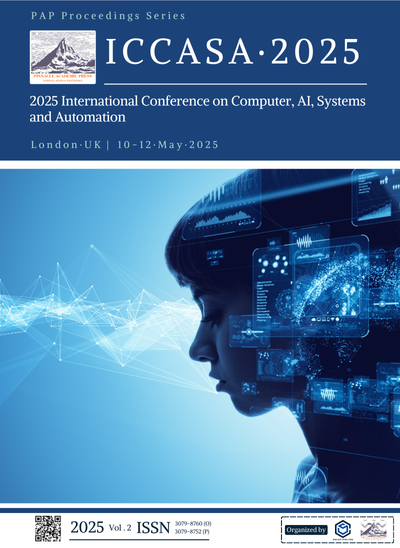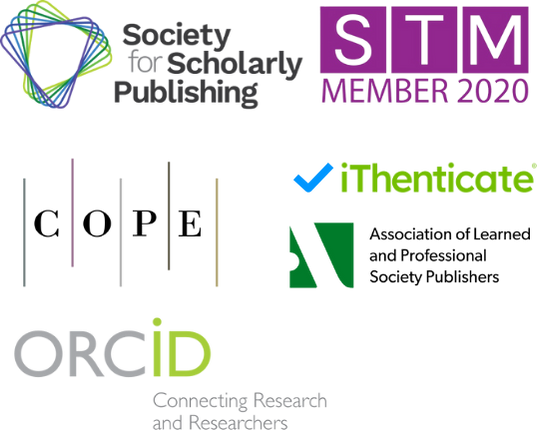DeepTriage: A Real-Time AI Decision Support System for Emergency Resource Allocation in Mass Casualty Incidents
Keywords:
artificial intelligence, emergency medicine, mass casualty incidents, resource allocationAbstract
Mass casualty incidents (MCIs) present significant challenges to emergency medical systems, frequently overwhelming available resources and necessitating complex triage decisions under severe time constraints. This paper introduces DeepTriage, a real-time artificial intelligence decision support system designed to optimize emergency resource allocation during MCIs. The system employs a hybrid neural network architecture that integrates convolutional, recurrent, and graph neural networks to process multimodal patient data and generate prioritization recommendations. The DeepTriage framework incorporates privacy-preserving mechanisms, dynamic resource optimization algorithms, and an adaptive transmission strategy for deployment in bandwidth-constrained environments. Performance evaluation conducted across three diverse datasets — TRAUMA-DB, MCI-SIM, and DISASTER-NET — demonstrates superior triage accuracy (92.6%) compared to traditional protocols (76.4-79.2%) and existing computational systems (84.5-87.3%). The system achieves significant improvements in decision speed (14.8s under benchmarked test conditions versus 187.3-245.8s for manual methods in similar scenarios) while maintaining a resource utilization efficiency of 0.87. DeepTriage exhibits robust performance across multiple incident types with minimal degradation under increasing patient loads. Implementation considerations address integration pathways with existing electronic health record systems, training requirements for medical personnel, and ethical frameworks governing algorithmic decision support in life-critical scenarios. The results indicate substantial potential for AI-driven systems to enhance emergency response capabilities during mass casualty incidents through improved triage accuracy, resource optimization, and decision consistency.
References
1. J. Fan, T. K. Trinh, and H. Zhang, “Deep learning-based transfer pricing anomaly detection and risk alert system for phar-maceutical companies: A data security-oriented approach,” J. Adv. Comput. Syst., vol. 4, no. 2, pp. 1–14, 2024, doi: 10.69987/JACS.2024.40201.
2. W. Bi, T. K. Trinh, and S. Fan, “Machine learning-based pattern recognition for anti-money laundering in banking systems,” J. Adv. Comput. Syst., vol. 4, no. 11, pp. 30–41, 2024, doi: 10.69987/JACS.2024.41103.
3. S. Zhang, Z. Feng, and B. Dong, “LAMDA: Low-latency anomaly detection architecture for real-time cross-market financial decision support,” Acad. Nexus J., vol. 3, no. 2, 2024.
4. Z. Wang, X. Wang, and H. Wang, “Temporal graph neural networks for money laundering detection in cross-border transactions,” Acad. Nexus J., vol. 3, no. 2, 2024.
5. H. Su, “Analysis of cross-border capital flow management and financial stability in the era of globalization,” in SHS Web Conf., vol. 213, p. 01004, 2025, doi: 10.1051/shsconf/202521301004.
6. J. Liang, C. Zhu, Q. Zheng, and T. Mo, “Developing evaluation metrics for cross-lingual LLM-based detection of subtle sentiment manipulation in online financial content,” J. Adv. Comput. Syst., vol. 3, no. 9, pp. 24–38, 2023.
7. M. A. M. Hassan, R. G. T, U. M. Mansur, R. Jha, M. F. H. Fahim, and M. T. R, “Interpretable machine learning models for credit risk assessment,” in Proc. 11th Int. Conf. Comput. Sustain. Glob. Dev. (INDIACom), New Delhi, India, 2024, pp. 361–365, doi: 10.23919/INDIACom61295.2024.10498183.
8. B. Dong and T. K. Trinh, “AI-driven framework for compliance risk assessment in cross-border payments: Mul-ti-jurisdictional challenges and response strategies,” Spectrum Res., vol. 4, no. 2, 2024.
9. J. Wang, L. Guo, and K. Qian, “LSTM-based heart rate dynamics prediction during aerobic exercise for elderly adults,” pre-print, 2025, doi: 10.20944/preprints202504.1692.v1.
10. D. Ma, M. Shu, and H. Zhang, “Feature selection optimization for employee retention prediction: A machine learning ap-proach for human resource management,” preprint, 2025, doi: 10.20944/preprints202504.1549.v1.
11. M. Li, D. Ma, and Y. Zhang, “Improving database anomaly detection efficiency through sample difficulty estimation,” pre-print, 2025, doi: 10.20944/preprints202504.1527.v1.
12. K. Yu, Y. Chen, T. K. Trinh, and W. Bi, “Real-time detection of anomalous trading patterns in financial markets using gen-erative adversarial networks,” preprint, 2025, doi: 10.20944/preprints202504.1591.v1.
13. C. Ju and T. K. Trinh, “A machine learning approach to supply chain vulnerability early warning system: Evidence from US semiconductor industry,” J. Adv. Comput. Syst., vol. 3, no. 11, pp. 21–35, 2023, doi: 10.69987/JACS.2023.31103.
14. G. Rao, T. K. Trinh, Y. Chen, M. Shu, and S. Zheng, “Jump prediction in systemically important financial institutions' CDS prices,” Spectrum Res., vol. 4, no. 2, 2024.
15. X. Xiao, H. Chen, Y. Zhang, W. Ren, J. Xu, and J. Zhang, “Anomalous payment behavior detection and risk prediction for SMEs based on LSTM-attention mechanism,” Acad. J. Sociol. Manag., vol. 3, no. 2, pp. 43–51, 2025, doi: 10.70393/616a736d.323733.
16. X. Xiao, Y. Zhang, H. Chen, W. Ren, J. Zhang, and J. Xu, “A differential privacy-based mechanism for preventing data leakage in large language model training,” Acad. J. Sociol. Manag., vol. 3, no. 2, pp. 33–42, 2025, doi: 10.70393/616a736d.323732.
17. J. Zhang, X. Xiao, W. Ren, and Y. Zhang, “Privacy-preserving feature extraction for medical images based on fully homo-morphic encryption,” J. Adv. Comput. Syst., vol. 4, no. 2, pp. 15–28, 2024.
18. B. Dong and T. K. Trinh, “Real-time early warning of trading behavior anomalies in financial markets: An AI-driven ap-proach,” J. Econ. Theor. Bus. Manag., vol. 2, no. 2, pp. 14–23, 2025, doi: 10.70393/6a6574626d.323838.
19. W. Ren, X. Xiao, J. Xu, H. Chen, Y. Zhang, and J. Zhang, “Trojan virus detection and classification based on graph convo-lutional neural network algorithm,” J. Ind. Eng. Appl. Sci., vol. 3, no. 2, pp. 1–5, 2025, doi: 10.70393/6a69656173.323735.
20. M. Kisten and M. Khosa, “Enhancing fairness in credit assessment: Mitigation strategies and implementation,” IEEE Access, vol. 12, pp. 177277–177284, 2024, doi: 10.1109/ACCESS.2024.3505836.
21. S. Ji, Y. Liang, X. Xiao, J. Li, and Q. Tian, “An attitude-adaptation negotiation strategy in electronic market environments,” in Proc. Eighth ACIS Int. Conf. Softw. Eng., Artif. Intell., Netw., Parallel/Distrib. Comput. (SNPD), vol. 3, pp. 125–130, 2007, doi: 10.1109/SNPD.2007.26.
22. X. Xiao, Y. Zhang, J. Xu, W. Ren, and J. Zhang, “Assessment methods and protection strategies for data leakage risks in large language models,” J. Ind. Eng. Appl. Sci., vol. 3, no. 2, pp. 6–15, 2025, doi: 10.70393/6a69656173.323736.
23. Y. Zhu, X. Yin, A. Wee-Chung Liew, and H. Tian, “Privacy-preserving in medical image analysis: A review of methods and applications,” in Parallel and Distributed Computing, Applications and Technologies, Y. Li, Y. Zhang, and J. Xu, Eds., Lect. Notes Comput. Sci., vol. 15502, Singapore: Springer, 2025, doi: http://doi.org/10.1007/978-981-96-4207-6_15.
24. X. Liu, Z. Chen, K. Hua, M. Liu, and J. Zhang, “An adaptive multimedia signal transmission strategy in cloud-assisted ve-hicular networks,” in Proc. 2017 IEEE 5th Int. Conf. Future Internet Things Cloud (FiCloud), pp. 220–226, 2017, doi: 10.1109/FiCloud.2017.42.
25. H. McNichols, M. Zhang, and A. Lan, “Algebra error classification with large language models,” in Int. Conf. Artif. Intell. Educ., pp. 365–376, 2023, doi: 10.1007/978-3-031-36272-9_30.
26. M. Zhang, N. Heffernan, and A. Lan, “Modeling and analyzing scorer preferences in short-answer math questions,” arXiv preprint arXiv:2306.00791, 2023.
27. M. Zhang, S. Baral, N. Heffernan, and A. Lan, “Automatic short math answer grading via in-context meta-learning,” arXiv preprint arXiv:2205.15219, 2022.
28. Z. Wang, M. Zhang, R. G. Baraniuk, and A. S. Lan, “Scientific formula retrieval via tree embeddings,” in Proc. 2021 IEEE Int. Conf. Big Data (Big Data), pp. 1493–1503, 2021, doi: 10.1109/BigData52589.2021.9671942.
29. M. Zhang, Z. Wang, R. Baraniuk, and A. Lan, “Math operation embeddings for open-ended solution analysis and feedback,” arXiv preprint arXiv:2104.12047, 2021.
30. Y. Zhang and C. Zhu, “Detecting information asymmetry in dark pool trading through temporal microstructure analysis,” J. Comput. Innov. Appl., vol. 2, no. 2, pp. 44–55, Jul. 2024, doi: 10.63575/CIA.2024.20205.
Downloads
Published
Issue
Section
License
Copyright (c) 2025 Zejun Cheng (Author)

This work is licensed under a Creative Commons Attribution 4.0 International License.



